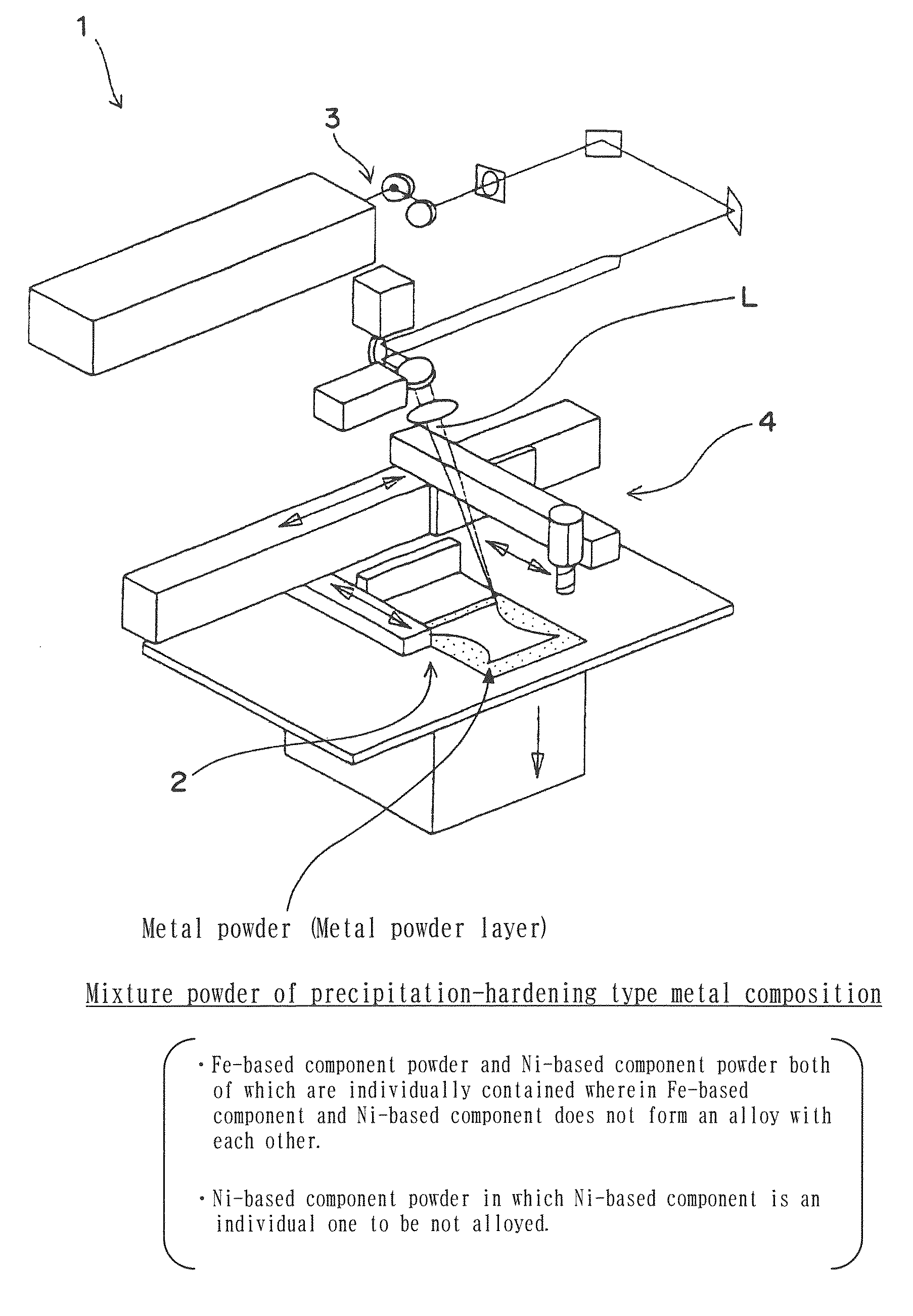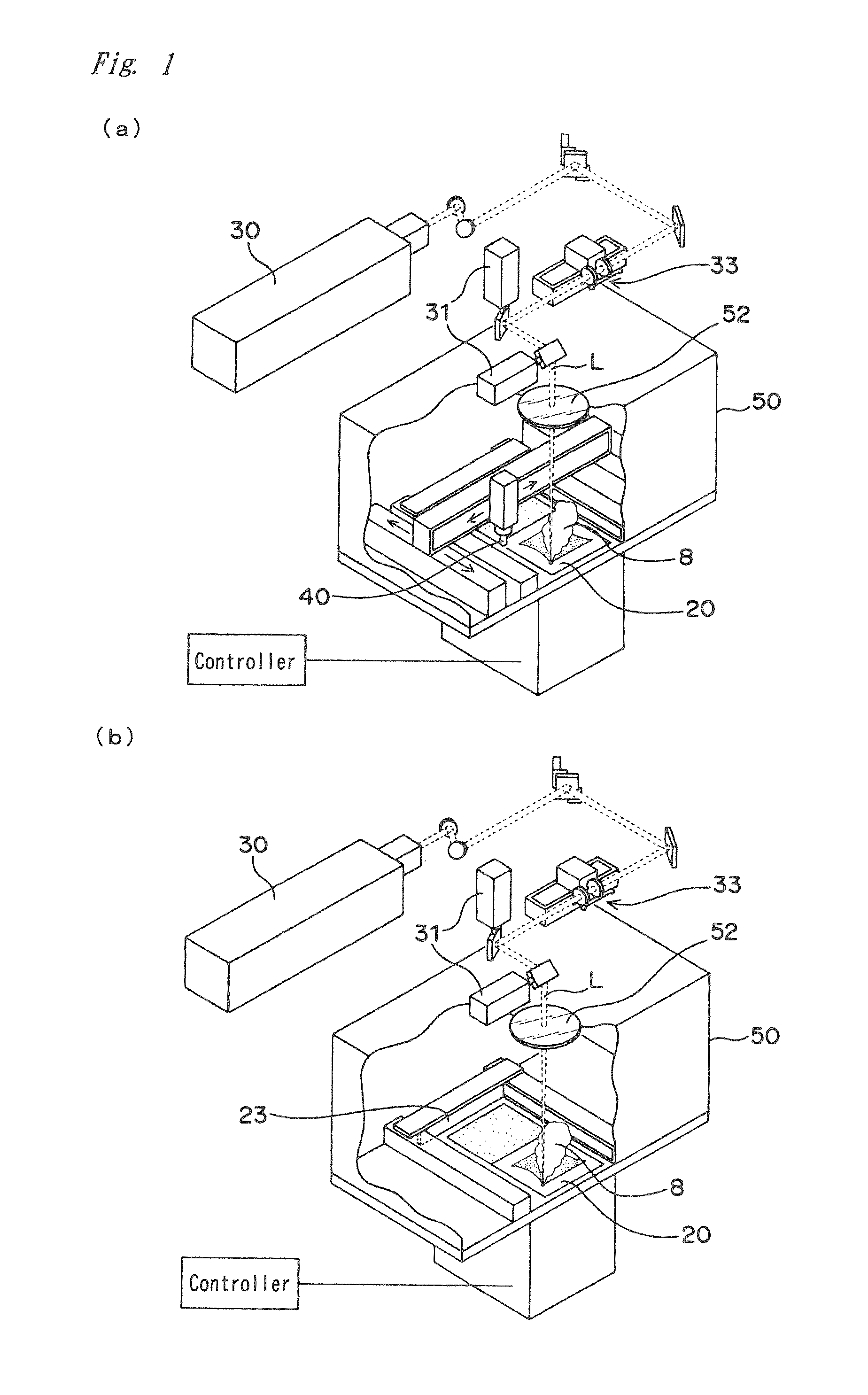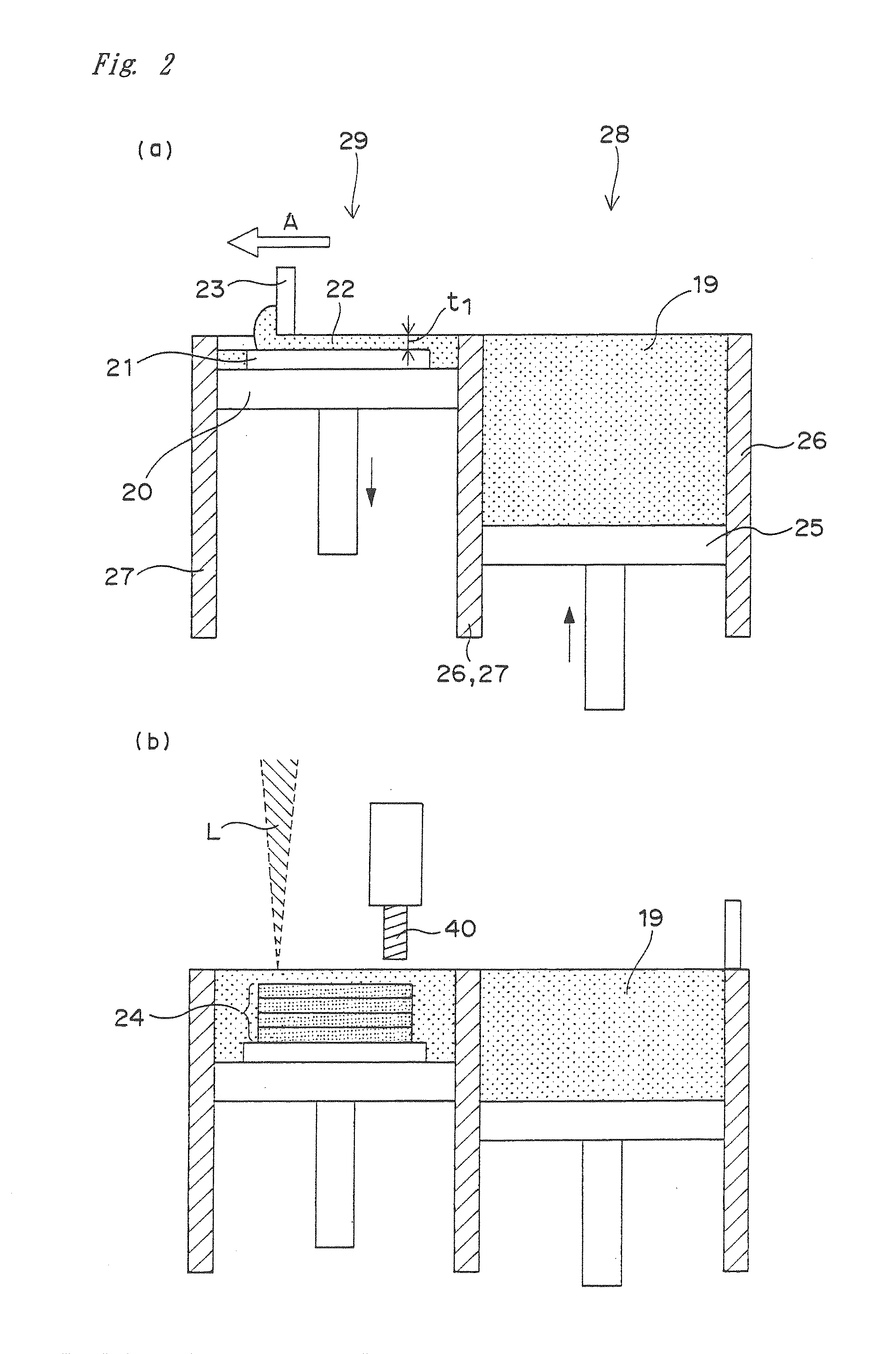Metal powder for selective laser sintering, method for manufacturing three-dimensional shaped object by using the same, and three-dimensional shaped object obtained therefrom
a laser sintering and metal powder technology, applied in the direction of metal layered products, additive manufacturing apparatus, natural mineral layered products, etc., can solve the problems of insufficient inability to form a low-density solidified layer, and inability to bring about a sufficient hardness of sintered products, etc., to achieve low-energy sintering, reduce thermal loading and thermal stress, the effect of low cos
- Summary
- Abstract
- Description
- Claims
- Application Information
AI Technical Summary
Benefits of technology
Problems solved by technology
Method used
Image
Examples
example 1
[0155]The experimental studies were carried out with respect to the characterizing features of the present invention. Specifically, the laser-sintering / layer-stacking process as well as the machining process was performed by use of the following powder mixtures A, B and C.
(Powder Mixture A) 18 Ni-Based Maraging
Fe—about 18% Ni—about 8% Co—about 5% Mo—about 0.4% Ti—about 0.1% Al (wherein “%” refers to percent by weight, and the content of Fe is remaining percent by weight)
(Powder Mixture B) 20 Ni-Based Maraging
Fe—about 19% Ni—about 1.5% Ti—about 0.5% Nb—about 0.3% Al (wherein “%” refers to percent by weight, and the content of Fe is remaining percent by weight)
(Powder Mixture C) Precipitation-Hardening Stainless Steel (SUS630)
Fe—about 15% Cr—about 4% Ni—about 5% Cu—about 0.4% Nb (wherein “%” refers to percent by weight, and the content of Fe is remaining percent by weight)
[0156]By using the powder mixtures A, B and C with their average particle diameter of 30 μm (i.e., 0.03 mm), the p...
example 2
[0165]The powder mixture of 18 Ni-based maraging composition (Fe—18% Ni—8% Co—5% Mo—0.4% Ti—0.1% Al) was prepared by use of six kinds of powder materials shown in FIGS. 9(a) to 9(f). Thereafter, the laser-sintering / layer-stacking process was performed by use of the prepared powder mixture.
[0166]A hardness and a mechanical strength of the obtained shaped object were evaluated, comparing them with those of another case where the powder material of the prior art was used. The result is shown in Table 3. As seen from Table 3, the shaped object according to the present invention exhibited the higher hardness and the higher mechanical strength, compared with those of the case of the prior art.
[0167]
TABLE 3Tensile0.2% ProofHardnessstrengthstressHV(MPa)(MPa)Material ofAfter260 738 518prior artmanufacturingof shapedobjectAfter heat260 744 474treatmentMaragingAfter3101,002 705manufacturingof shapedobjectAfter heat4801,4611,211treatment
PUM
| Property | Measurement | Unit |
|---|---|---|
| diameter | aaaaa | aaaaa |
| aspect ratio | aaaaa | aaaaa |
| aspect ratio | aaaaa | aaaaa |
Abstract
Description
Claims
Application Information
 Login to View More
Login to View More - R&D
- Intellectual Property
- Life Sciences
- Materials
- Tech Scout
- Unparalleled Data Quality
- Higher Quality Content
- 60% Fewer Hallucinations
Browse by: Latest US Patents, China's latest patents, Technical Efficacy Thesaurus, Application Domain, Technology Topic, Popular Technical Reports.
© 2025 PatSnap. All rights reserved.Legal|Privacy policy|Modern Slavery Act Transparency Statement|Sitemap|About US| Contact US: help@patsnap.com



